If you want your little one to grow to love leafy greens, start introducing them early! Here is everything you need to know about safely serving kale for baby led weaning, including how to cut it, if it needs to be cooked, and baby friendly kale recipes.
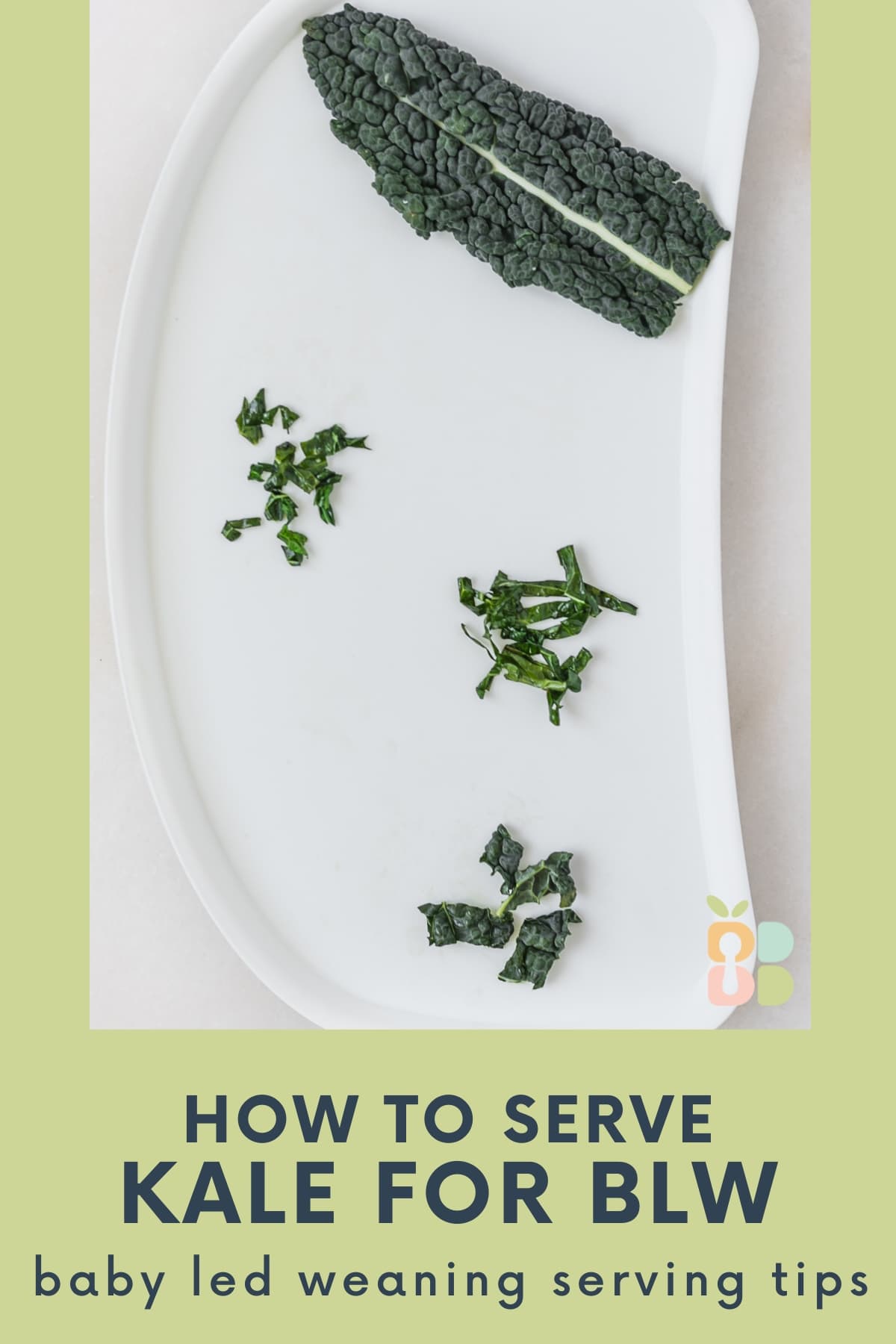
Kale is one of those vegetables that even many adults struggle to like. But research shows that the more you expose little ones to bitter flavors like kale and other green vegetables as babies, the more likely they will accept those flavors later on.1 So if you're one of those adults who does like kale (like me!), here are my tips for safely serving this healthy leafy green when using a baby led weaning approach.
Looking for ways to serve other leafy greens? Find out How To Serve Greens for Baby Led Weaning here.
Jump to:
Can Babies Eat Kale?
Yes! As soon as babies are developmentally ready for solids, usually around 6 months, they can have kale. It will take some prep if you actually want baby to ingest any of it, and you can start slowly with just a tiny bit, since kale is extra fibrous and could be frustrating for the littlest eaters who don't yet have a pincer grasp.
Baby Health Benefits
Kale, a member of the cruciferous vegetable family (which also includes cabbage, broccoli, cauliflower, and Brussels sprouts), is very nutritious. It comes in several varieties, including curly (which is most common), purple, and Lacinato (dinosaur). All varieties are very nutrient dense, including high amounts of2:
- Fiber - great for babies digestion and gut health
- Vitamin C - aids in the absorption of iron from other foods and acts as an antioxidant
- Vitamin K - good for healthy blood clotting
- Antioxidants & Anticancer compounds - including powerful flavanoids quercetin and kaempferol which can help prevent chronic disease like heart disease3, and compounds sulforaphane4 and indole-3-carbinol5 which have strong anticancer properties
Kale also contains smaller amounts of many other nutrients, including vitamin A, B6, potassium, calcium, folate, iron and magnesium.
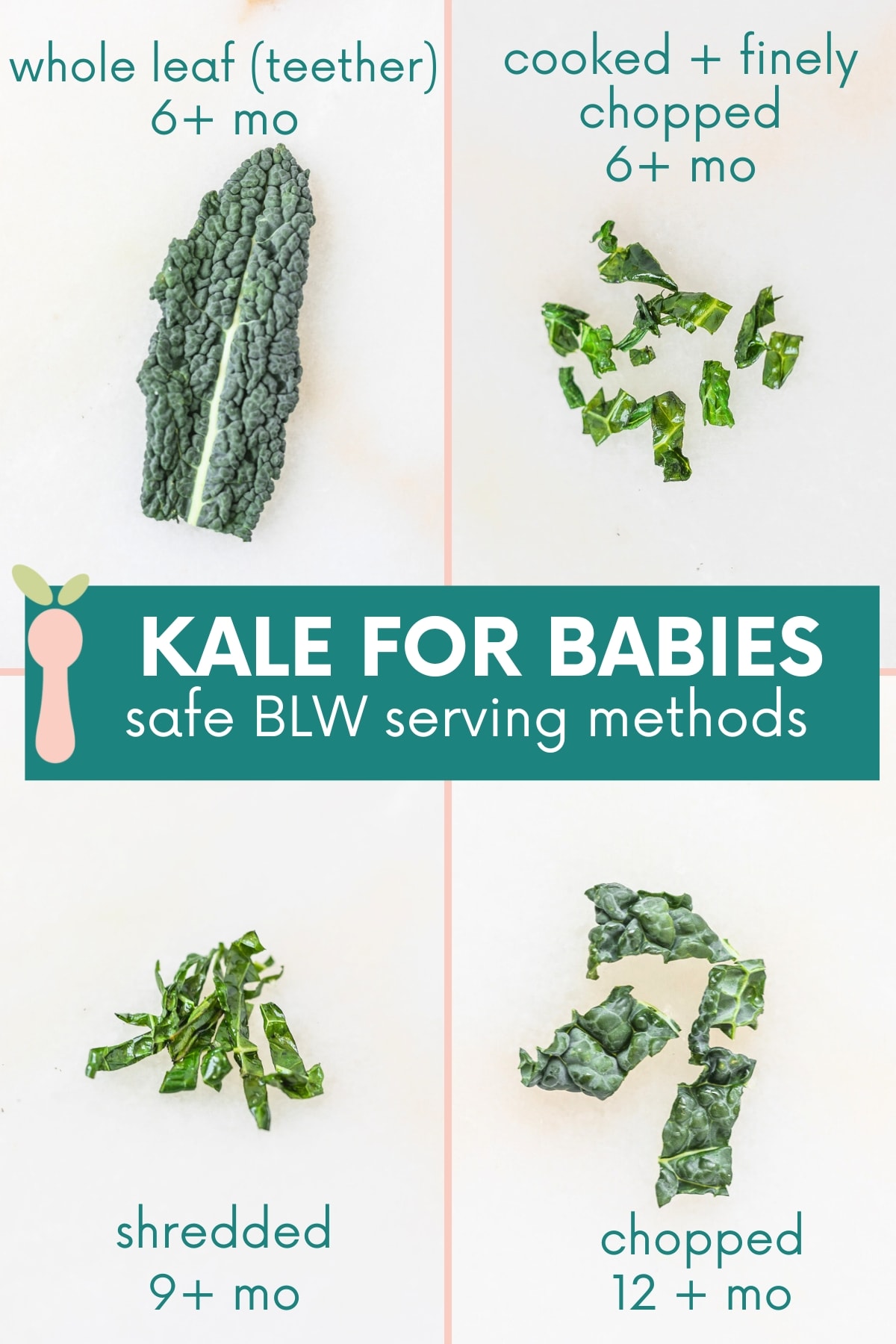
How To Serve Kale For Baby Led Weaning
Kale is very tough when raw, so unless you're offering a whole leaf to young babies just for flavor exploration, it should be cooked and chopped small enough that babies can handle it. Here are some methods of serving kale using a baby led weaning method by age:
1. Large, whole leaf (6-8 months)
You can offer a whole, raw leafy with stem intact at this age as a teether. Baby won't actually eat any of it, but it is good flavor exposure and exercise for his eating muscles. Once baby gets teeth, stop serving this way, as the tough rib can accidentally break off in the mouth.
2. Cooked and finely chopped (6+ months)
Remove the rib and finely chop cooked kale. The tiny pieces will probably be difficult for baby to pick up at this age, so you may offer them in a bowl with a suction bottom, or on a pre-loaded spoon. Baby will likely be able to eat more if you stir the finely chopped kale into another soft food, such as an egg, mashed potatoes, or mashed beans.
3. Shredded, raw or cooked (9+ months)
Once baby has progressed in eating skill (around when baby has developed a pincer grasp), you can offer shredded kale - pieces that are still cut very thin but are longer. You can cook the kale or serve it raw. The pieces may stick in baby's mouth and/or cause a little gagging or coughing, especially with raw kale, but this texture is great practice for baby's eating skills. You can also continue to serve it finely chopped or stirred into other foods.
4. Chopped, raw or cooked (12+ months)
At this age, you can chop kale into a little bit larger pieces, and offer it cooked, or raw, as in a salad. You can also continue to serve it finely chopped, shredded, or stirred into other foods as long as you wish.
Tip: When preparing raw kale, it's often tastier and softer when massaged with a little bit of olive oil - for both adults and children! Simply drizzle a little olive oil on kale that has been washed, dried and chopped to the size of your liking and use your fingers to rub the oil into the kale. Make sure to remove the rib before chopping.
Best Cooking Method for Babies
While kale can be steamed or boiled, I don't recommend it. The taste and texture are not appealing. The best method to cook kale that is tasty and appropriate for little ones is a combination of sautéing and steaming, or steam-sautéing:
- Wash the kale and chop it to the size you'd like (be sure to remove the ribs). If you need the kale finely chopped for the youngest eaters, you can chop it smaller after cooking.
- Heat a little oil or butter in a skillet. Add the kale and any spices or seasonings you like (I like minced garlic or shallot) and cook, stirring for a couple of minutes.
- Add a splash of water or broth to the skillet and cover it, letting the kale steam for a couple of minutes, or until the kale has softened up just a bit.
- If you like, add a little squeeze of lemon or any other last-minutes seasonings.
Of course, you can also simply sauté kale, or cook it with other dishes, such as soups or stews.
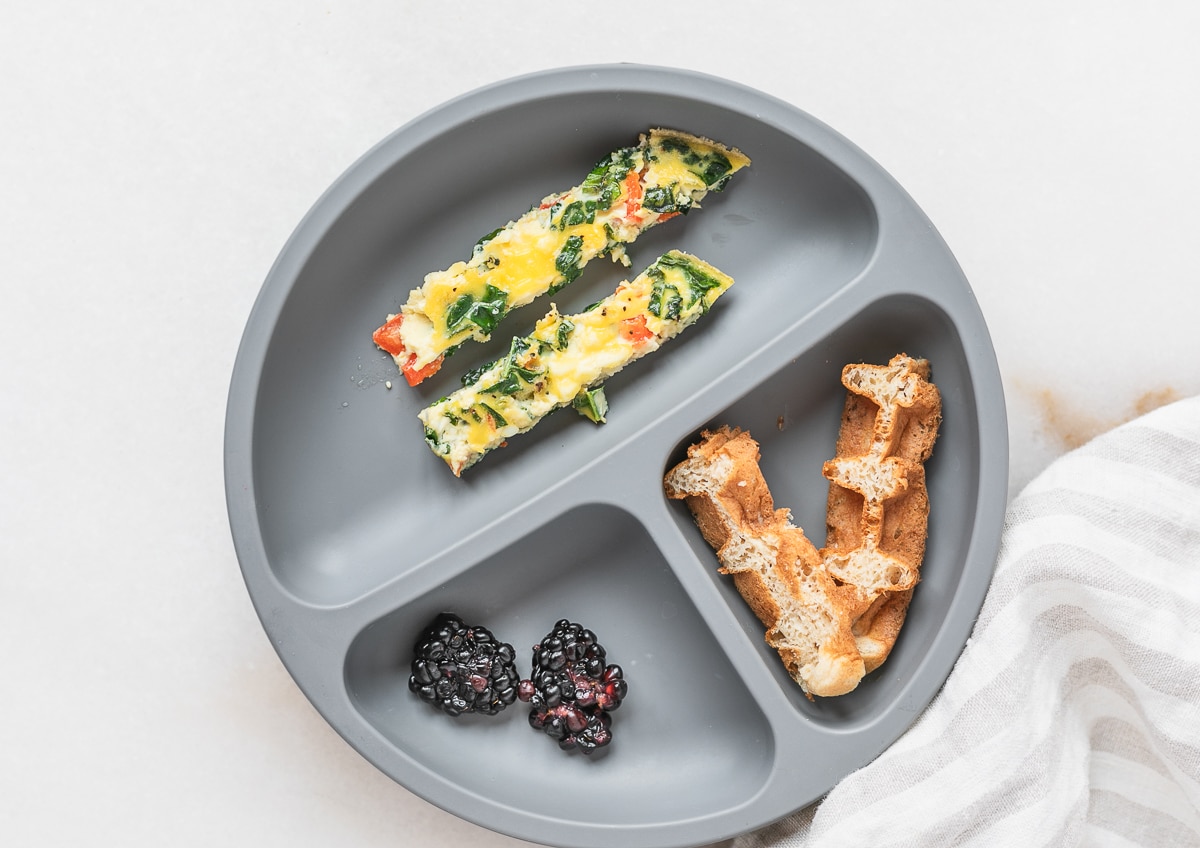
BLW Friendly Kale Recipes
- Red Pepper Kale Frittata (pictured)
- Baby & Toddler Sweet Potato Veggie Frittata (replace the spinach with finely chopped kale)
- Spinach Turkey Meatballs for Baby and Toddler (again, replace the spinach with kale)
- Awesome Sautéd Kale by My Nourished Home
- Falafel by Minimalist Baker (use kale in place of the collard greens)
- Sweet Potato, Kale and Quinoa Patties by Mummy to Dex
- Kale Pesto by Sweet Peas and Saffron
- Garlicky Kale with White Beans and Lemon by She Likes Food
- Southwest Sweet Potato Kale and Black Bean Skillet by The Recipe Well
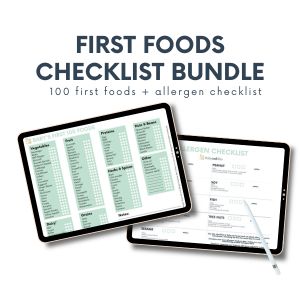
Track your baby's journey through starting solids! Get my 100 First Foods Checklist and Allergen Checklist Bundle today!
FAQ
No, kale is not a common allergen, though it is possible to be allergic to any food. People with Oral Allergy Syndrome may react to kale. Cooking kale usually eliminates the OAS reaction.
No. If kale is offered in appropriate methods, it is not a choking hazard, though the leaves may stick to baby's tongue or roof of the mouth and cause gagging or coughing. If this happens, calmly coach baby to spit out the food, or encourage a drink of water.
Babies can be offered kale cut into appropriate pieces starting around 9 months of age (see above guidelines). You can also offer a large raw leaf as a teether as young as 6 months, but stop once baby has teeth.
Any food that is high in fiber, such as kale, may cause gas if baby eats too much. Start with just a small amount at a time and offer even less if baby shows signs of discomfort after eating kale.
- Complementary Feeding Strategies to Facilitate Acceptance of Fruits and Vegetables: A Narrative Review of the Literature
↩︎ - USDA FoodData Central ↩︎
- Dietary Quercetin and Kaempferol: Bioavailability and Potential Cardiovascular-Related Bioactivity in Humans ↩︎
- Assessing the Fate and Bioavailability of Glucosinolates in Kale (Brassica oleracea) Using Simulated Human Digestion and Caco-2 Cell Uptake Models ↩︎
- Indole-3-carbinol: a plant hormone combatting cancer ↩︎





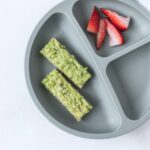





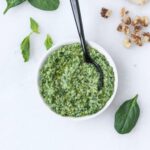

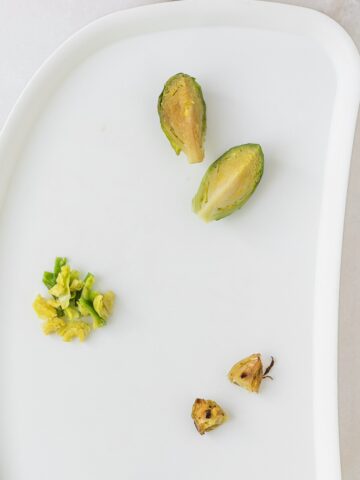
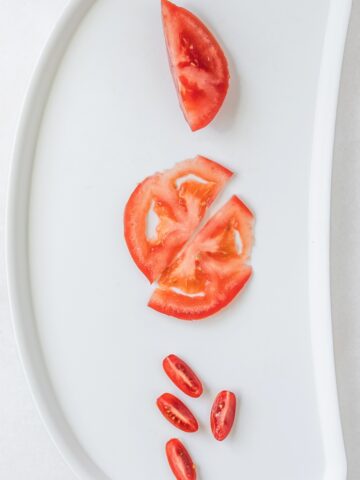
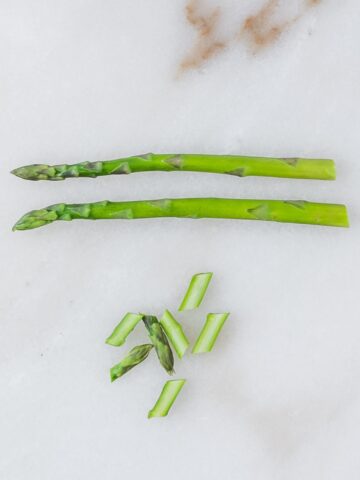
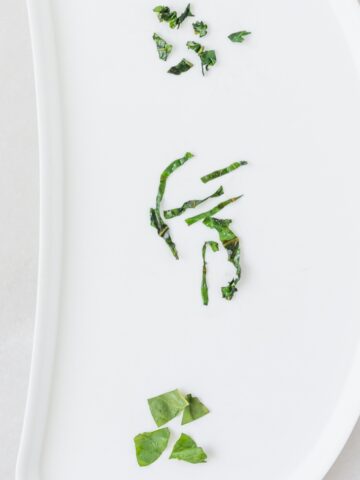
Leave a Reply